Brassica napus subsp. pabularia ‘Red Russian’
If you’re looking for a sweet and tender variety of kale for your garden, look no further than ‘Red Russian.’
This heirloom variety has large leaves that are softer than other varieties, making it a welcome change from fall greens that require lots of cooking.
This variety also has a unique appearance with its frilly green leaves and purple-red stems. In fact, some people even cultivate it just for ornamental purposes, adding rich color to their fall gardens.
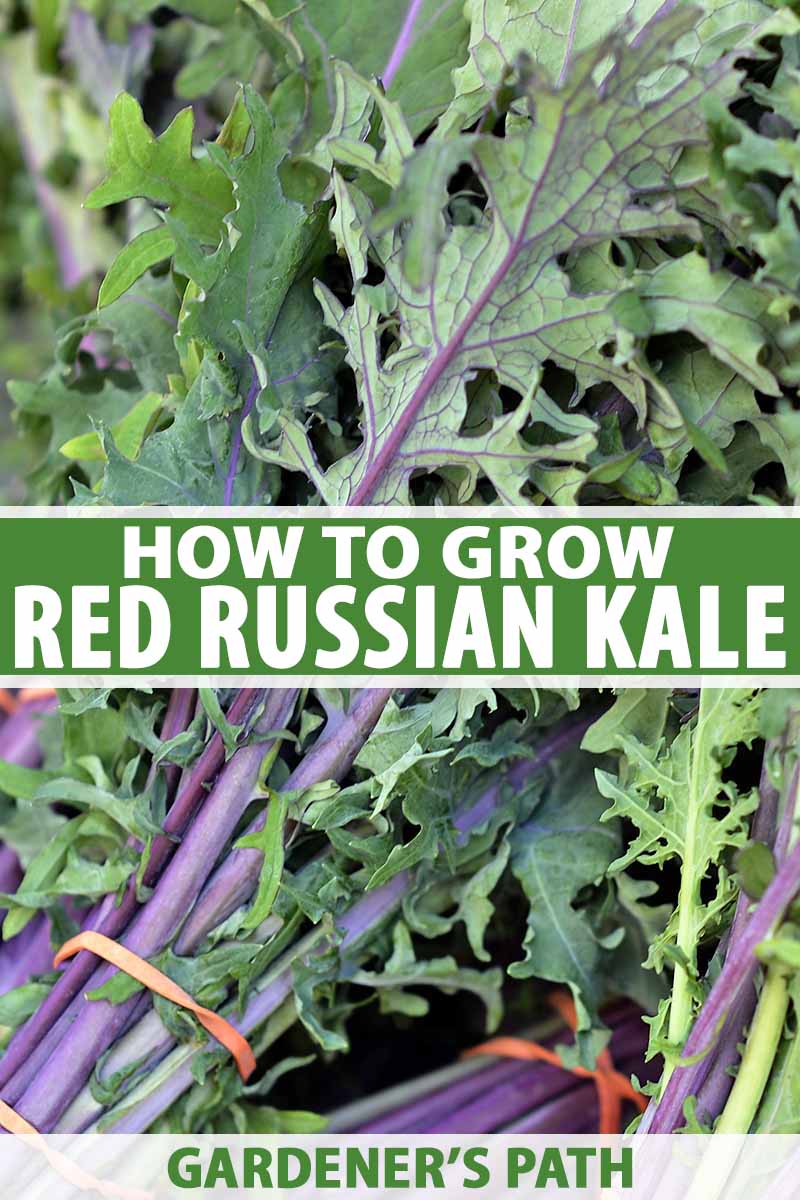
We link to vendors to help you find relevant products. If you buy from one of our links, we may earn a commission.
This cultivar is grown in a similar way to other varieties of kale, but I’ll provide the details for growing ‘Red Russian’ below.
What You’ll Learn
What Is ‘Red Russian’ Kale?
This particular cultivar of Brassica oleracea var. viridis is also known as ragged jack and sweet red. Flatter than other cultivars and with jagged edges, its leaves are also the most tender and mild of all varieties.

Due to its tenderness, ‘Red Russian’ is often grown for baby greens. These small leaves make great additions to salads.
The bright purple stems differentiate this variety from ‘White Russian’. This purple color indicates the presence of compounds called anthocyanins.
According to a 2017 study in the Food and Nutrition Research Journal, anthocyanins provide a number of health benefits including antioxidant and antimicrobial properties.
When and How to Plant
This cultivar has similar requirements to other types of kale. It should be planted in full sun and provided with about half an inch of water a week.
However, as with all crops, water more in hotter weather and less in cooler weather.
‘Red Russian’ is cold hardy, just like other varieties. It can tolerate some heat, but it does best in colder conditions.

Therefore, it is best grown in the spring and again in the fall.
If you are starting seeds indoors to transplant, choose a sowing date based on your growing zone:
- For growing zones 2 to 5, sow seeds in April and again in late July.
- If your zone is 6 to 8, sow seeds in March and again in early-mid August.
- If you are in zone 9 or above, sow seeds in February and again in September.
These transplants will be ready to plant out into your garden after three to four weeks. At this point, plant the seedlings a foot apart.
If planting into containers, select a container at least a foot in diameter and ten inches deep. Follow the seeding and transplanting dates recommended above.
If there is still danger of frost, protect your transplants with floating row covers.
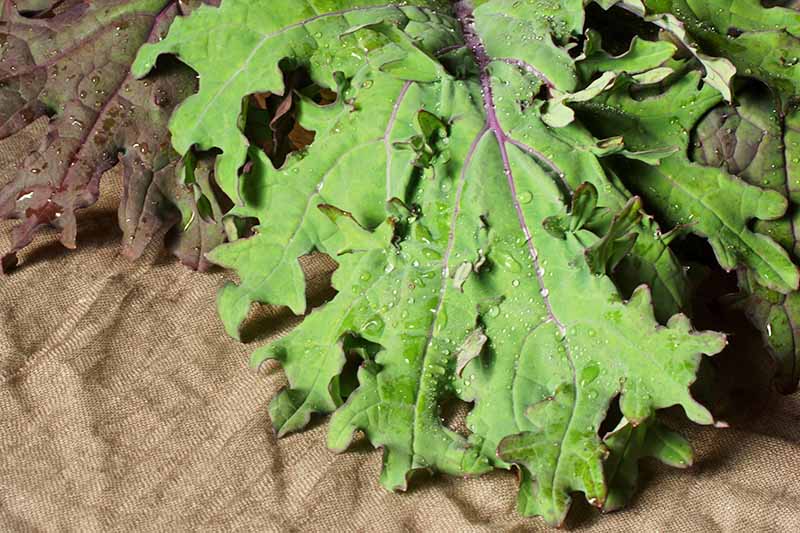
If you are direct-seeding, sow seeds in your garden after the last frost in the spring. You can continue sowing seeds until daytime temperatures are above 80ºF.
You can sow seeds once again in August through September. The latest you should sow seeds outdoors is two weeks before your predicted first frost date.
An easy way to plant is to sow a single row of seeds spaced an inch apart. As seedlings emerge, you can thin them to a foot apart for full-sized plants, or refrain from thinning at all if you want to harvest baby greens.
Get more tips for planting and growing in our general guide to growing kale.
Crop Management: Pests and Disease
The ‘Red Russian’ variety is a relatively easy crop to manage. But there are some common problems to look out for. You can read more about managing and treating wilting leaves and yellow and thinning leaves.
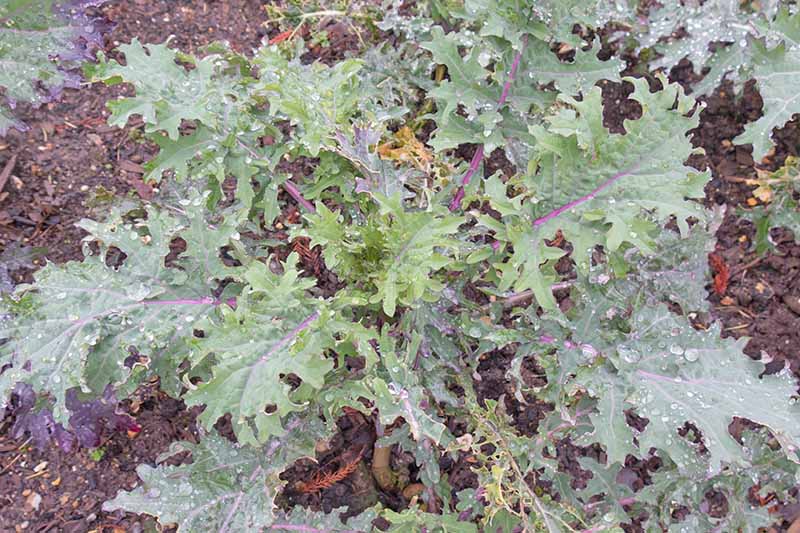
This type of leafy green vegetable is also susceptible to damage from insects including aphids and cabbage worms.
Floating row covers can keep out a number of common pests, and a strong spray with the hose or hand picking can help to eradicate others. Natural insecticides including neem oil and insecticidal soap can also help to knock down infestations.
Be sure to read labels carefully, and utilize products that are certified as food safe.
How to Harvest
Whether you transplant or directly seed, baby kale of this variety is ready for harvest 25 days after sowing, and full-sized leaves can typically be harvested after 50 days.
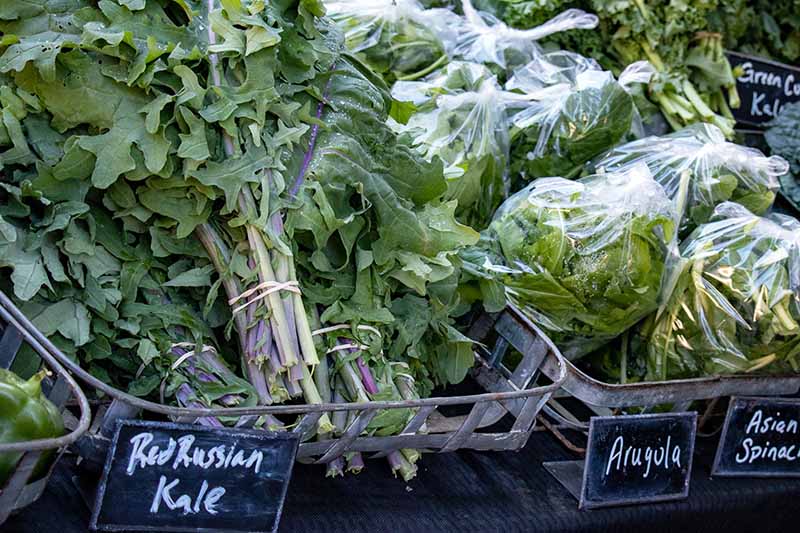
Due to the shortening days of fall, your plants will mature more slowly in the fall than in the spring.
This variety is harvested in the same way as other types of kale. One important tip to remember is to only harvest the outer leaves, and never the interior portions of new growth.
This allows the plant to continue to produce new leaves, providing you with multiple harvests.
Post harvest, I’ve noticed this cultivar tends to wilt faster than other greens. To prevent wilting, harvest early in the morning while it is still cool outside. Make sure to take the leaves out of the sun quickly after you’ve collected them.
To remove field heat imparted by the sun in the veggie patch and to prevent wilting post-harvest, dunk the leaves in a tub of cold water. You can then store leaves in a plastic bag or container inside your refrigerator.
Russian and Siberian species and cultivars are sometime left to grow for a second season and their flower buds are harvested and are known as kale rabe or napini.
Recipes and Cooking Ideas
This type is great served raw in salads due to its tender texture and sweet taste. In fact, according to University of Wisconsin Extension, a light frost can increase its sweetness. I’ve noticed this too.
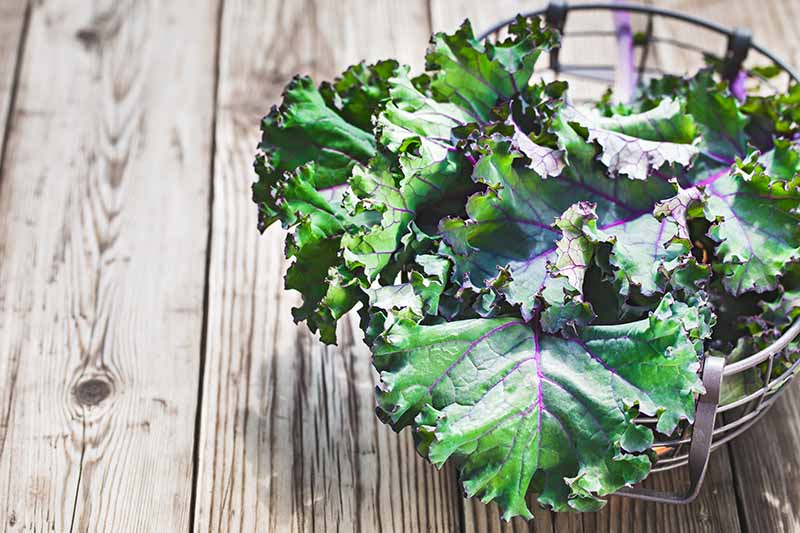
To enjoy this sweetness, try it with grapefruit, apple, and red onion in this salad recipe from our sister site, Foodal.
Or add an avocado and lemon dressing to give it a deliciously creamy texture. You’ll find a recipe for creamy and colorful raw kale salad also on Foodal.
This type of leafy green also lends itself well to various cooking methods. One of my favorite ways to prepare it is to quickly saute the leaves in olive oil with onion and garlic.
Cooked this way, it makes a great topping for grits, or a delicious companion for a fried egg.
You can also try adding it to some pasta with lemon and cheese as in this recipe from Foodal, or using it in pesto.
Sweet and Tender
If you’re hesitant about growing your own kale because you’re afraid it might be tough or bitter, give ‘Red Russian’ a try. I’ve always loved its tender texture and slightly sweet taste.
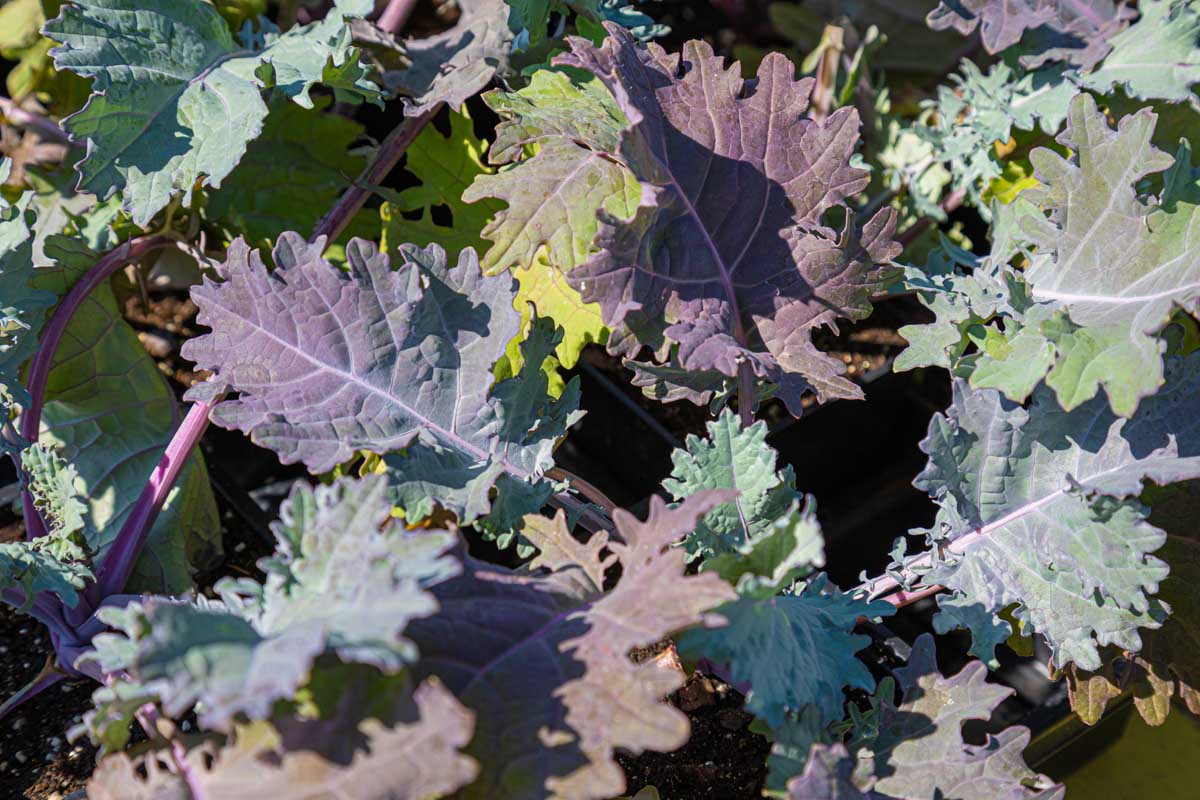
Have you tried growing this variety in your garden? Let us know in the comments.
And read these articles next to learn more about this cool weather crop:
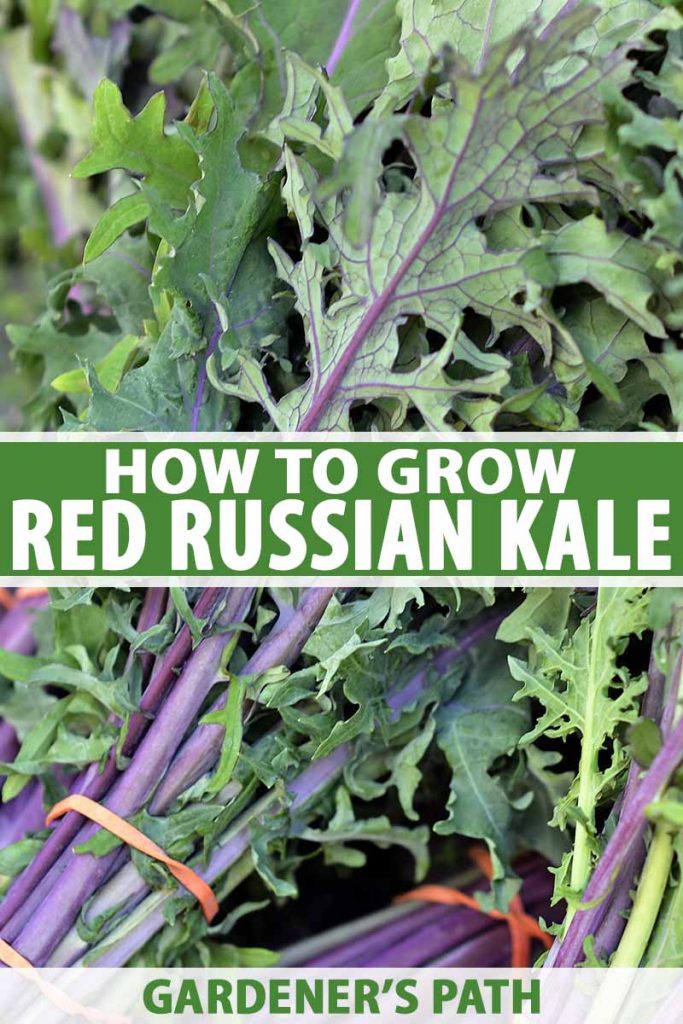
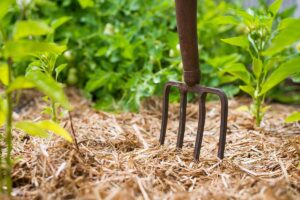


My Russian kale has not died… it is doing fine in zone 5. Is it annual or perennial? Can clumps be divided?
Great questions, Terry. Kale plants are not typically divided, but they are cool weather crops. They are in fact biennials, not strictly annual or perennial. You can read more about this here.
I’ve got a bunch growing in pots right now. Zone 9 here. Wasn’t sure what would grow but it was a bit warmer January so why not. Different size pots some growing with beets. Mostly an experimental grow. Love the red russian though. I helped out an organic farm a couple years back and they had this variety. My favorite by far. This is the first year I have grown this variety. I’ve grown a dinosaur variety once before. Was tasty but infestation took hold.
I have a bunch this year, first kale I have ever tried growing.
My leaves are leggy but it could be due to location and crowding.
I planted Russian Kale zone 8 deep south last march and it never died back Still with me looking great and I just cut the bottom leaves and it still keeps giving me new leaves…It does better here than other kale strangely It gets sun in our short winters and partial sun in the summer…I did have to fight the dreaded white butterfly but it recovered!
Good article, can you send some seeds to India.
Prolific!
Nice!
Hi, I scored 6 Russian kale seedlings @ the NC state farmers market yesterday 1st time for starting a fall crop of anything, wish me luck 👍
Good luck and enjoy the leafy greens!